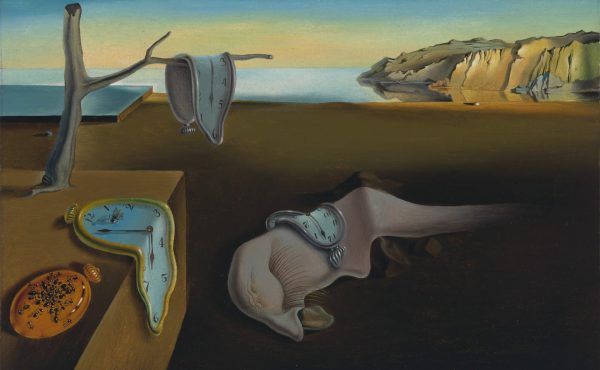“the suburbs ought to be either glorified by romance and religion or else destroyed by fire from heaven, or even by firebrands from the earth.”
– G. K. Chesterton
Few authors have written as persistently and eloquently on the topic of the home than the English author, G. K. Chesterton. Home is central to his first major work of fiction The Napoleon of Notting Hill, published in 1904, which begins in the dreary and bureaucratic England of 1984.
In this future, where political power rests firmly in the hands of oligarchs, the purely symbolic monarchy is elected by lottery. The novel begins with the election of an eccentric and practical joker, Auberon Quin, to the position of monarch. To amuse himself, Quin reinstates the ancient boroughs of London, insisting that the city’s elites cloth themselves in the costumes and the surround themselves with the heraldry of their suburbs (both costumes and heraldry being designed by Quin himself).
Yet the plot takes a turn with the introduction of Adam Wayne, the Lord High Provost of Notting Hill and the very opposite of Auberon Quin. For, where Quin is a man to whom all is a joke, Wayne is a man incapable of anything but the gravest sincerity. Where the political and economic elites have humoured the royal hobby, Adam Wayne believes sincerely and intently in the rights, duty, and honour of his dirty and poor Notting Hill.
Adam Wayne, it must be clear, is almost entirely mad. Yet he is simultaneously the antidote to the dreary grey of modernity. And it helps too that he gets the best lines. As Provost of Notting Hill Wayne seeks to defend the Pump Street against a commercial development. When mocked that he is defending only a very small part of Notting Hill, Wayne replies with the stirring “That which is large enough for the rich to covet … is large enough for the poor to defend.”
Both Auberon Quin and Adam Wayne, who are two (very different) sides of the same coin, set themselves against modernity. Quin does so through his elaborate jokes, refusing to acknowledge that the idols of modernity, that is commerce, politics, or respectability, hold any intrinsic value. Wanye sets himself directly against what he calls “this horrible silence of modernity” through his attachment to Pump Street above all ‘rational’ and monetary claims.
In response to the accusation that his attachment to Notting Hill, a dirty and poor ‘side-slum’, is absurd, Wayne replies that “Notting Hill … is a rise or high ground of the common earth, on which men have built houses to live, in which they are born, fall in love, pray, marry, and die. Why should I think it absurd?”
Thus, for Wayne, and indeed for Chesterton, ‘home’ becomes an invocation against modernity (and all its works and all its empty promises).
But The Napoleon of Notting Hill is not unique in its contrasting of modern civilisation with the virtues of the home. Indeed, such invocations form something of a metanarrative from Chesterton, to Tolkien’s Shire, to even as quintessentially an Australian text as The Castle.
It is worth noting also that The Napoleon of Notting Hill is not (or not exactly) a Christian work. Or at least the novel’s central characters, Auberon Quin and Adam Wayne, are not exactly Christians. The “fairy wand” Wayne brings to bear against the disenchantment of modernity is the sword. And the ‘re-enchantment’ of his London is accomplished through bloodshed.
A less violent appeal to domesticity features in one of Chesterton’s letters to his then fiancé, and later wife, Francis. The letter is worth quoting at length.
“I have sometimes thought it would be very fine to take an ordinary house, a very poor, commonplace house in West Kensington, say, and make it symbolic. Not artistic – Heaven – O Heaven forbid. My blood boils when I think of the affronts put by knock-kneed pictorial epicures on the strong, honest, ugly, patient shapes of necessary things: the brave old bones of life. There are aesthetic pattering prigs who can look on a saucepan without one tear of joy or sadness: mongrel decadents that can see no dignity in the honourable scars of a kettle. So they concentrate all their house decoration on coloured windows that nobody looks out of, and vases of lilies that everybody wishes out of the way. No: my idea (which is much cheaper) is to make a house really (allegoric) really explain its own essential meaning. Mystical or ancient sayings should be inscribed on every object, the more prosaic the object the better; and the more coarsely and rudely the inscription was traced the better. ‘Hast thou sent the Rain upon the Earth?’ should be inscribed on the Umbrella-Stand: perhaps on the Umbrella. ‘Even the Hairs of your Head are all numbered’ would give a tremendous significance to one’s hairbrushes: the words about ‘living water’ would reveal the music and sanctity of the sink: while ‘Our God is a consuming Fire’ might be written over the kitchen-grate, to assist the mystic musings of the cook.”
Here is a truly sacramental vision of the home where, Chesterton contends, the saying or explanation enunciates the “essential meaning” (i.e. the spiritual purpose) of the daily, prosaic object.
The home, as Chesterton pictures it, stands against the reductionism of modernity where the town becomes a dormitory suburb, the person becomes a contracted employee, and the home becomes a part of a well-rounded investment portfolio (with a handy tax exception). Whether the home and its associated values are strong enough to form a bulwark against modernity is another question.



